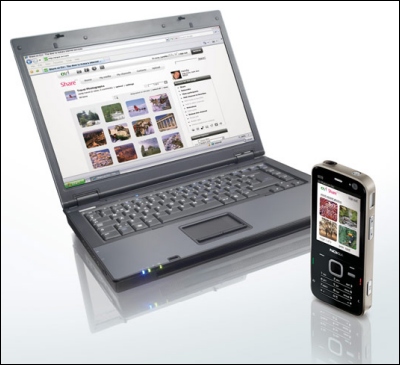 "You can do all these wonderful things with
our new phones, you'll be able to share your life like never before-"
"You can do all these wonderful things with
our new phones, you'll be able to share your life like never before-"
But hold on a minute, Mr Blingphone
Manufacturer.... Just because you can do this with technology, doesn't mean you should be doing this. And nor does it
automatically mean that by providing this technology, people are going to make
use of it.
In the Web 2.0 world, there's a rule of
thumb of 90/9/1. To explain, 90% of people will sit back and consume content passively (i.e. read sites, watch YouTube, etc); 9% of people will contribute something, be it a
comment, or an email to the author. Only 1% of people will actually be
pro-active and create something, upload it and put it on display. That's a
really small number that drives the content industry.
And it is these numbers, which have been
confirmed in practice by many companies and endeavours, that I'm looking at alongside Nokia's new Ovi
strategy of sharing everything, being supremely ‘social,' tagging all your
pictures with your locations, putting them online for all to see (or, if you
spend some time working on it, a subset of people). And I'm wondering, will
Nokia suddenly break the 90/9/1 rule and turn everyone into publisher and
pushers of content?
In a word, no.
Let's take the idea of geo-tagging and
uploading a picture as a prime example, because it encapsulates the media push
in these phones, the advanced functions, and a whole swathe of location based
services that could be coming up in the future.
And if I want to be a touch scurrilous - you need to power up the camera, give it a few seconds to take the picture, and
then wait for up to a minute till the assisted GPS gets a lock on the satellites
before attaching your latitude and longitude. That's a long wait for an
instant snap.
I'm sure that there will be a significant
number of (high profile) people who will use this service, and I reckon that the take up may even be as high as 3%. That's close to a three fold increase on the number of people
you would normally expect to contribute to a site or service (according to the 90/9/1 rule), but it's still a tiny proportion of your handsets in terms of sales. But, of course, it's these people that will influence
purchasers, these people who will make the loudest noise on the Internet and
proclaim the Nxx to be the greatest device since sliced bread. Everyone will
look at them and think ‘how can they be so promiscuous with their life?' And
they'll head off to get a new phone, just so they can talk to members of the
family and take a few fancy snaps that are unlikely to make it off their device. And the only models available in the shop will be these top of the
line, camera/GPS/video uploading packed phones, all through the range.
But, of course, it's these people that will influence
purchasers, these people who will make the loudest noise on the Internet and
proclaim the Nxx to be the greatest device since sliced bread. Everyone will
look at them and think ‘how can they be so promiscuous with their life?' And
they'll head off to get a new phone, just so they can talk to members of the
family and take a few fancy snaps that are unlikely to make it off their device. And the only models available in the shop will be these top of the
line, camera/GPS/video uploading packed phones, all through the range.
"Does it let me call people? 8 megapixels? Great I'll
take it." And another ‘multimedia lifestyle computing device' ships out the
door, a tick appears in the sales column, and the web 2.0 sharing experience
gets another convert... who'll just call people with it and take the sort of boring snaps that have been taken since time began.
There will be a wealth of survey data,
duplicated across all the handset manufacturers, with nicely ranked lists of
features on how much people want each item. Having worked in the Survey
business myself, it's very easy to have a survey give the answer you want.
There are too many stories on the Internet of people suddenly discovering a
wonderful feature on their phone and being amazed it works. Invariably it's a
function us power users have been familiar with for many a year and which exists on the lowliest handsets.
When the big iPhone upgrade at MacWorld was
'you can add multiple recipients to an SMS', you have to realise the regular
phone-buying public around the world is so far behind the curve that any one of
the smartphones announced at Mobile World Congress yesterday is going to be
awash with features that get in the way of what most people use a phone for. Which is mainly talking.
There's a place for all the gee-whizz
features, there's a place to scream out to the world what you're doing. I just don't
think that this is a strategy for the mainstream market.
Ewan Spence, 12 Feb 2008
